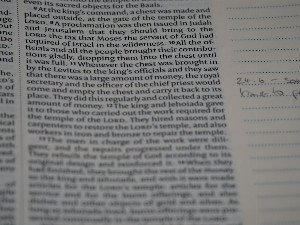Author
Design and analysis of pneumatic based automatic unwind splicing on a rotogravure machine
Introduction
Design and analysis of pneumatic based automatic unwind splicing on a rotogravure machine. Design and analyze a pneumatic automatic unwind splicing system for rotogravure machines. Focuses on tension control, automation, and cost. Details mechanisms for efficient operation.
Abstract
The aim of this design is to obtain a design for the tension control system and the automatic system, which are the two mechanisms in the unwind, accompanied by an estimate of the design costs. The design process was carried out using the French method. This method is often used for new products or still has few competitors, with the advantage of being able to facilitate the selection of product concept variants efficiently when designing products that have many limitations in terms of variants. Based on the validation results, the second concept design used is a tension measurement mechanism using a load cell and speed regulation using a magnetic powder brake. The results of numerical calculations show that the maximum rotation torque value of the printed material is 13.6 Nm, the maximum speed is 628.24 rpm, and the maximum stress value measured is 206.122 N. Based on the validation results, the second concept design is a movement mechanism that uses four pneumatic cylinders to move the frame and cutter. The results of numerical calculations show that the time required to cut the material is 0.24 seconds, and the time required to return to its original position is 2.25 seconds. The amount of air required for one cutting cycle is 37.83 ×10-6 m3/s. The estimated cost of designing the overall unwind unit based on the components used is IDR. 74,873,625.
Review
This paper, titled 'Design and analysis of pneumatic based automatic unwind splicing on a rotogravure machine,' presents a focused approach to developing critical components for industrial printing applications. The authors aim to design both a tension control system and an automatic splicing system for an unwind unit, crucial for efficient material handling in rotogravure machines, along with estimating the associated design costs. A key methodological aspect highlighted is the use of the "French method" for the design process, which is noted for its efficacy in navigating product concept variants, especially for new products or those with limited competition. The technical core of the paper is robustly supported by specific concept designs and their numerical validation. For the tension control system, the validated concept incorporates a load cell for precise tension measurement and a magnetic powder brake for effective speed regulation. Numerical calculations confirm its viability, indicating a maximum rotation torque of 13.6 Nm, a maximum speed of 628.24 rpm, and a maximum stress value of 206.122 N. The automatic splicing mechanism is designed with four pneumatic cylinders to control the movement of the frame and cutter. Its performance is quantified with a cutting time of 0.24 seconds, a return time of 2.25 seconds, and an air consumption of 37.83 ×10-6 m3/s per cutting cycle. Overall, this paper provides a valuable contribution by offering a detailed and numerically validated design for an automatic unwind splicing system. The inclusion of an estimated total design cost of IDR 74,873,625 for the unwind unit adds significant practical relevance, making the proposed solution tangible for potential industrial adoption. While the abstract emphasizes design and numerical analysis, the presented results strongly suggest the theoretical feasibility and efficiency of the pneumatic-based mechanisms. This work establishes a solid foundation for further research, particularly for the physical prototyping and experimental validation of these innovative designs in a real-world rotogravure setting.
Full Text
You need to be logged in to view the full text and Download file of this article - Design and analysis of pneumatic based automatic unwind splicing on a rotogravure machine from JMEL : Journal of Mechanical Engineering Learning .
Login to View Full Text And DownloadComments
You need to be logged in to post a comment.
Top Blogs by Rating
Beyond the Stereotype: Unpacki...
By Sciaria
Reclaim Your Day: Mastering th...
By Sciaria
The Invisible Hand of Defaults...
By Sciaria
Favorite Blog
Genetic Dark Matter: The Unsee...
By Sciaria
Unleash Your Inner Explorer: T...
By Sciaria
The Invisible Load: Unveiling...
By Sciaria





